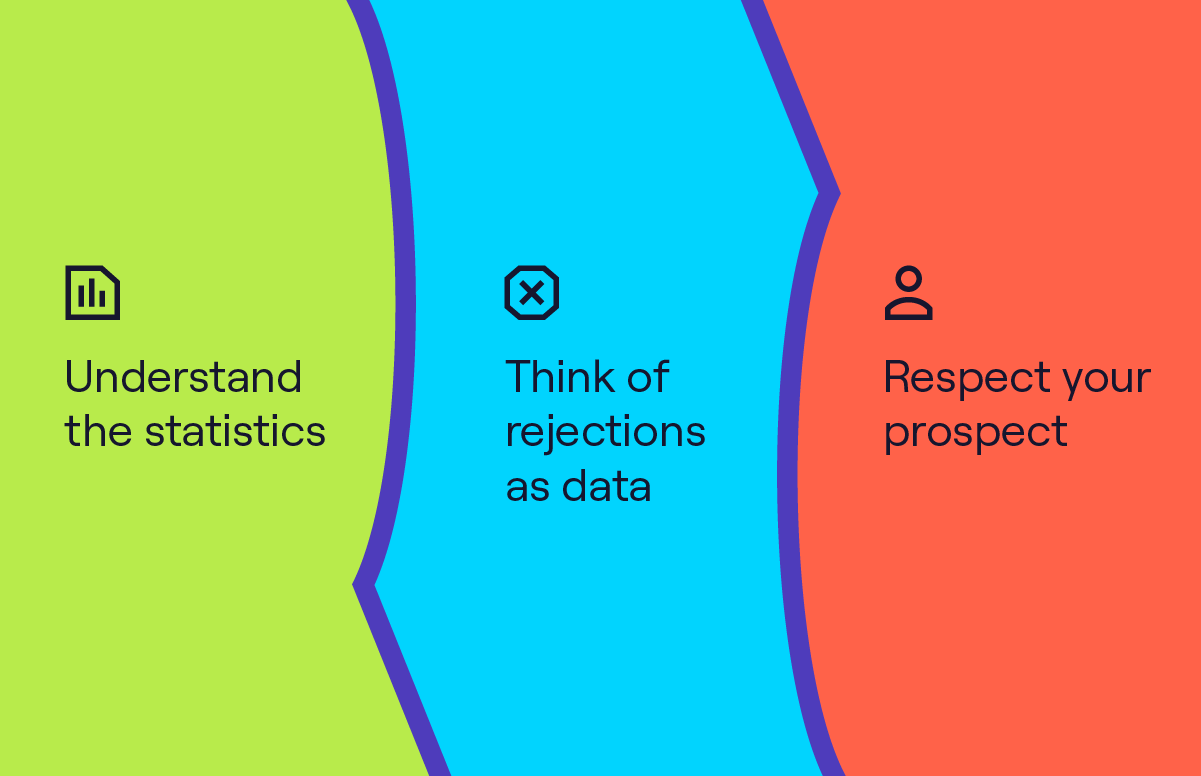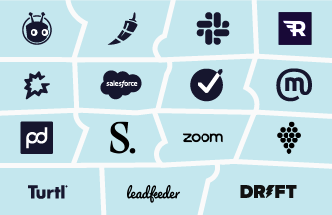6 Tips to Win at Sales Call Planning
You’re sitting at work, and it’s just turned 9 am. Time to start cold calling.
You’ve got your list to dial, but you’ve got a nervous rumble in your stomach… and no, it’s not because you forgot to eat breakfast. 😬
It’s because you didn’t do any sales call planning.
If you’re new to sales or still learning the ropes, it’s important to hone the preparation skills that make cold calling easier.
Don’t worry; we’ve got you covered! Keep reading for tips on planning a sales call. 📞
1. Research your customers
It’s like the old saying, fail to prepare, prepare to fail.
If you don’t do the research, how do you expect to master sales pre-call planning? Below are some of the best ways to research your prospects before picking up the phone.
Know your ICP inside out
You can’t sell anything to anyone if you don’t know who you’re selling to! This is where your Ideal Customer Profile (ICP) comes in.
Undertaking careful research to establish the perfect buyer is a key part of call planning in sales. It will save you hours of speaking to prospects who aren’t interested in (or even in the market for) your product.
Your ICP should consist of buyers who will benefit from your product or service while giving you enough value in return to make your business profitable. This ROI could include referrals, buyer insights, testimonials, and revenue.
In most cases, your ideal customer should be able to use your product to boost their bottom line, as well as:
- Reduce costs.
- Drive efficiency.
- Improve the productivity/well-being of staff.
Establishing an ICP’s main aim is to align your sales and marketing teams so that both pursue the same type and quality of prospect.
Connect with your prospects where they hang out
Another great way to research prospects as part of your pre-sales call planning is to connect with them on social media.
You may already be building up a personal brand online, where your prospects hang out, such as on LinkedIn.
Sales superhero Morgan Ingram explains the benefits of connecting with your prospects online. He says:
“The fastest way to build brand affinity is to have conversations with your audience.”
“If someone has taken the time to engage with your post and left a comment, then don’t ignore it. Ask questions, share insights and spark friendly debates.”
It’s important to build that sense of familiarity before starting the cold calling process. That way, when you pick up the phone, you’ve already established a small connection with your prospect.
Use a sales intelligence tool!
We’d be silly not to mention it…
Sales call planning software is a game-changer when it comes to conducting research, and there are many options available.
The main benefits of using a tool like Cognism are the number of hours saved and the accuracy of the data when researching prospects.
Discover how salespeople use Cognism to connect with their ideal buyers faster than ever before - press ▶️ to watch our explainer video.
2. Practice with a script
We get it. Cold calling can be an uncomfortable and nerve-wracking experience when you start.
However, there are plenty of resources for salespeople who are planning sales calls. David Bentham, Cognism’s Director of Sales Development, says it best in his LinkedIn post below. 👇
Practising with a cold calling script is a great way to keep your nerves in check for those first few calls. Especially if you’re worried, you might forget what you want to say. The more times you practice, the more you’ll be able to recall the points you want to share with your prospect and the less time you’ll take for pre-sales call planning.
Run practice sessions or tune into Cognism’s Cold Calling Live workshops; these are great ways to get constructive feedback from other sellers about your approach.
3. Get your opening right
When it comes to starting a conversation with a prospect over the phone, how do you do it?
For Jason Bay, Founder & CEO at Outbound Squad, it’s all about your tonality and pacing. He explains that you should “talk about half as fast as you think you should talk and really enunciate the words in your opener.”
There’s more than one way to start a conversation. So, it’s a great idea to use your sales call planning time to experiment with what openers work best for you.
Review your calls and make a note of the openings that you give you the best responses from prospects. If you’re unsure what kind of openings to use, check out 17 of the best from the Cognism team.
Once you’ve experimented with different openers and found what works for you, stick to it. This means you won’t worry or think too much about what you’ve got to say in those crucial seconds at the start of the call.
4. Prepare for objection handling
It’s a cast-iron rule for sales call planning:
You will experience objections on your cold calls. Knowing how to handle them is a key part of sales call prep.
Active listening is the best way to kickstart your objection handling process. As a sales rep, it’s your job to speak less and listen more. That way, it’ll be easier to pick up on the customer pain points that might be blocking a sale.
Use the 70/30 rule as your guide. It’s the number one rule of communication when making sales calls. The rule states that a prospect or lead should do 70% of the talking, and the rep should do only 30%.
Combine active listening with asking open-ended qualifying questions, and you’ll be able to help your prospect solve their issues and learn from their objections.
5. Change your mindset
The thing is, cold calling isn’t just about booking demos.
The more pushy and ‘salesy’ you are on a cold call, the more your prospect will want to turn and run.
So, when it comes to planning your sales calls, it’s essential to focus on having meaningful conversations with your prospects. That means showing them you’re just a human on the other end of the phone.
As you build up a rapport with your prospect, bear in mind that not everyone will be in-market to make a purchase. According to Chet Holmes’ Buyer’s Pyramid, just 3% of people on your list want to buy right now.
In times of economic uncertainty, the buying committee gets even bigger. So, it’s vital to have meaningful conversations that don’t always lead to a pitch.
If your product isn’t right for your prospect, do you know of another that would be a better fit? Focusing on the prospect’s needs and setting them up for success will ensure that you’ll be front of mind when they’re next in-market for your product.
This will also help you generate social proof that you’re not just there to make a sale; you’re there to make a difference to your prospects.
6. Nail your closing
So, you’ve done your research, practised your intro, prepared yourself to handle objections, and are focused on having a meaningful conversation with your prospect.
But how do you close out your call?
Be prepared to address any questions prospects have about your competition ahead of time. Your approach should be similar to practising objection handling. Make sure you acknowledge their questions and provide value with your answers.
- Focus on the buyer. This will help you control the conversation. Use resources like battle cards and leverage this time to educate them about your product.
- Be transparent. Buyers research products in depth before they speak to sales. There’s no point trying to be smoke and mirrors because today’s prospects are educated; they’ll know about any flaws before purchasing.
- Lean into your unique selling point. What makes your product different from the rest? Is it your features? Is it your customer success team? Make sure your prospect knows!
If you’ve had a positive result and you’re booking your prospect in for a demo or getting them to sign on the dotted line - congrats! Closing is one of the most exciting parts of the sales process for the client.
And if the result wasn’t what you wanted, don’t worry. Ask for feedback on your sales call planning so you can learn and improve your approach.
Regarding handling cold calling rejection, Ryan Reisert recommends that salespeople look at their stats holistically instead of in a vacuum.
“Some days, you will have more rejections than others, but have a look at your stats across the month. They generally normalise over time.”
“If you have a hard day, but you only had six conversations, maybe those were the 6/10 that were never going to be interested.”
“Make some more calls; the next few might be better! You have to hang on for the layup. If you let the first ten get to you, you might give up, but stick to the process. The numbers usually work out.”
“If not, then go back to your call list. Review the suitability of your prospects for your product or service and adjust your message where necessary.”
Most importantly, stay respectful and shake off the rejection. Move on to the next sale!

Sales call planning: final thoughts
Preparing for a sales call might seem daunting at first. But we hope you’ve learnt some new tricks that should make those cold calls run more smoothly!
Here are our sales call planning highlights again.
- Research your prospect and know your ICP inside out.
- Practice your cold calling techniques and ask for feedback from peers and mentors.
- Establish the right tonality and pacing for your sales call openers.
- Address all issues and handle any objections before closing your call.
- Stay customer-centric and have meaningful conversations, even if it doesn’t end in a sale.
- Highlight your unique selling points when closing. If it doesn’t work, don’t let the rejection get to you.



.jpg)